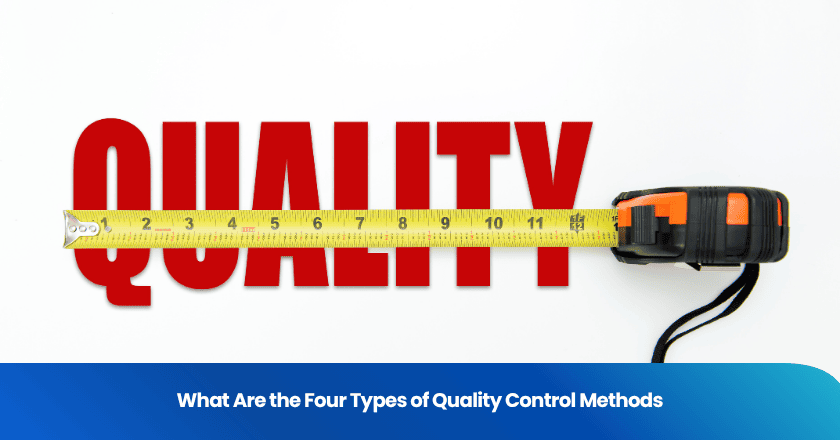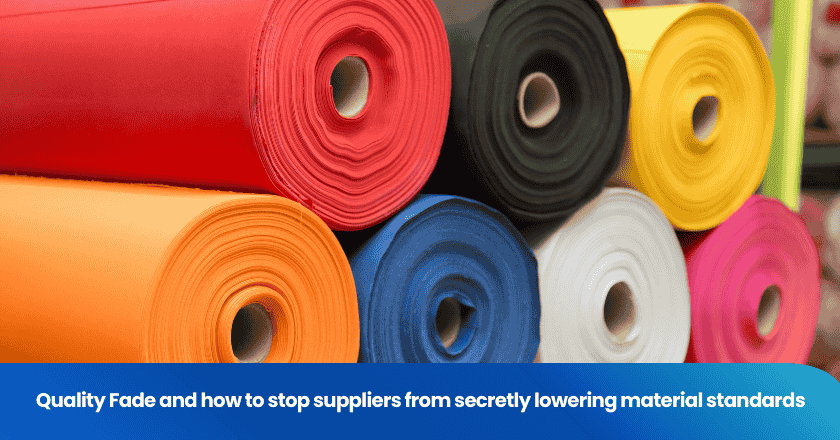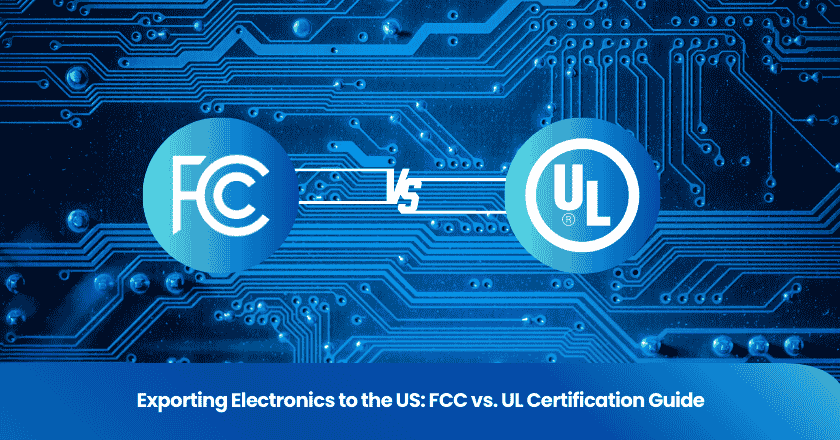
In modern industries, you encounter 4 types of quality control methods: process control, acceptance sampling, control charts, and product quality control. Process control monitors production activities to keep outputs consistent. Acceptance sampling evaluates batches by inspecting selected samples. Control charts track process performance over time. Product quality control inspects finished goods to verify compliance with specifications.
These 4 types of quality control methods help you maintain low defect rates and meet industry standards. International standards, such as ISO 9001, encourage you to adopt systematic approaches for quality control and improvement.
Key Takeaways
- Process control helps maintain consistent product quality by monitoring production activities in real time.
- Acceptance sampling allows you to evaluate product quality by inspecting a small sample instead of every item, saving time and resources.
- Control charts visually track process performance over time, helping you identify trends and take corrective actions quickly.
- Product quality control focuses on inspecting finished goods to ensure they meet quality standards before reaching customers.
- Combining different quality control methods can enhance overall effectiveness and address specific production challenges.
Process Control in Quality Control Methods
Definition
Process control stands as a core element among the 4 types of quality control. You use process control to systematically ensure that your products or services meet established quality standards. According to ISO standards, quality control involves operational techniques and activities such as sampling, measurement, and testing. These activities help you maintain consistency, minimize costs, and improve customer satisfaction. In industries like food service, process control supports restaurant quality control by making sure every dish meets food quality standards.
How It Works
You monitor and manage production processes in real time with process control. This method allows you to detect deviations from set parameters and make immediate adjustments. For example, you might track temperature, pressure, or ingredient ratios during manufacturing. By automating these adjustments, you reduce waste and minimize errors. This approach not only ensures compliance with quality control methods but also helps you optimize efficiency and reduce operational costs. In large-scale environments, process control can lead to a 25-30% reduction in costs by streamlining workflows and minimizing material waste.
Tip: Consistent process control helps you maintain high standards in restaurant quality control, ensuring every meal meets customer expectations.
Example
Imagine you run a food production facility. You use sensors to monitor the pH level of a sauce during cooking. If the pH drifts outside the acceptable range, the system automatically adjusts the ingredients to bring it back in line. This prevents unsafe products from reaching customers and supports your commitment to food quality standards. In the automotive industry, you might use process control to monitor assembly line operations, ensuring each vehicle part meets strict specifications.
Tools
You have access to a wide range of tools and techniques for process control, including:
- Statistical Process Control (SPC)
- Visual Inspection
- Dimensional Inspection
- Failure Mode and Effect Analysis (FMEA)
- End-of-Line Testing
- Non-Destructive Testing (NDT)
- Six Sigma
- Automated Optical Inspection (AOI)
- Assembly Line Audits
- Root Cause Analysis (RCA)
These tools help you identify issues early, maintain consistency, and support all types of quality control. By integrating these tools into your workflow, you strengthen your overall quality control methods and ensure reliable outcomes.
Acceptance Sampling: Types of Quality Control
Definition
Acceptance sampling stands as a vital technique among the 4 types of quality control. You use this method to make statistically valid decisions about product quality without inspecting every item in a batch. Unlike other types of quality control, acceptance sampling focuses on evaluating a representative sample from a lot. This approach helps you determine if the entire batch meets your quality control standards while saving time and resources.
How It Works
You apply acceptance sampling by selecting a random sample from a production lot and inspecting it for defects. You then use statistical models to decide if the lot passes or fails based on the sample results. This process relies on probability distributions and sampling plans to balance risk and efficiency. You often use acceptance sampling when inspecting every item is impractical, such as in restaurant quality control or pharmaceutical manufacturing. By evaluating a sample, you reduce the chances of defective products reaching consumers and maintain compliance with food quality standards.
- Acceptance sampling plans utilize various statistical models and probability distributions to assess product quality.
- Recent innovations include the exponentiated half-logistic distribution and Weibull distribution for handling uncertainties.
- Time truncated sampling schemes and improved double sampling inspection plans enhance reliability testing.
You also use Acceptable Quality Level (AQL) to define the number of units to inspect and the acceptable number of defects. This helps you manage the risk of shipping defective products and provides a reliable snapshot of overall product quality.
Example
Consider a scenario in pharmaceutical manufacturing. You receive a shipment of tablets and need to verify their quality. Instead of inspecting every tablet, you select a sample based on your sampling plan. If the sample meets your quality control methods, you accept the entire lot. If not, you reject it or inspect further. This approach saves time and reduces costs, especially when inspections are destructive or time-consuming. In restaurant quality control, you might use acceptance sampling to check a subset of meals for compliance with food quality standards before serving them to customers.
Tip: Acceptance sampling helps you prevent inspector fatigue and ensures consistent quality in high-volume environments.
Tools
You have access to several tools and sampling plans for acceptance sampling. Common options include single sampling plans, double sampling plans, and sequential sampling plans. You also use statistical software to calculate sample sizes and analyze results. Regulatory requirements, such as those in medical device manufacturing, mandate the use of statistically sound methods and documentation of sampling plans.
| Benefit | Description |
|---|---|
| Cost-Effective | Reduces the cost of inspecting 100% of the products while ensuring adequate quality levels. |
| Time-Saving | Especially useful in industries where inspections are destructive or time-consuming. |
| Applicable to Large Volumes | Practical for high-production environments where inspecting every item would be infeasible. |
| Prevents Inspector Fatigue | Sampling reduces the burden on inspectors, thereby decreasing errors caused by fatigue. |
Control Charts and the Four Types of Quality Control
Definition
You use control charts as essential tools in quality control. These charts help you monitor and improve processes by visually showing how a process behaves over time. A control chart displays process data as points on a graph, with a central line representing the average and two lines marking the upper and lower control limits. This setup allows you to see if your process stays within acceptable limits or if it drifts, which can signal problems or opportunities for improvement. Control charts play a key role in the 4 types of quality control, especially when you need to maintain consistency in production.
How It Works
You track process performance over time by plotting measurements on a control chart. Each point represents a sample or measurement from your process. If the points stay within the control limits, your process is stable. If they fall outside, you may need to investigate and take corrective action. Control charts help you distinguish between common cause variation, which is natural, and special cause variation, which requires intervention. In restaurant quality control, you can use control charts to monitor food temperature or cooking times, ensuring you meet food quality standards. Automated data collection and real-time notifications allow you to respond quickly when a process trends out of specification.
Tip: Control charts enable early detection of process variations, helping you maintain high standards in food processing and restaurant quality control.
Example
Imagine you manage a bakery. You want to ensure every batch of bread meets your quality control methods for weight and texture. You record the weight of each loaf and plot the results on a control chart. If you notice several points outside the control limits, you investigate the cause—perhaps an ingredient ratio changed or an oven malfunctioned. By catching these issues early, you prevent defects and maintain consistent product quality. In food processing, control charts help you spot trends before they become major problems, supporting continuous improvement.
Tools
You have access to several types of control charts, each suited for different production scenarios:
| Control Chart Type | Purpose | When to Use |
|---|---|---|
| X̄ and R Chart | Continuous data in small subgroups (2-10 units) | Tracking temperature, thickness, assembly time |
| X̄ and S Chart | Larger subgroups (>10 units) | High-volume production, complex formulations |
| I-MR Chart | Individual measurements | When subgrouping is impractical |
Quality assurance software provides real-time analytics and dashboards, giving you visibility into quality performance. Automated systems collect data and send notifications when processes trend out of specification. You can use run rules to trigger alerts for immediate corrective actions. In industries like pharmaceuticals, automobiles, and food, advanced charts such as VEWMA and FEWMA offer high sensitivity to process deviations. These tools help you maintain control and support all types of quality control.
Product Quality Control: 4 Types Overview
Definition
Product quality control focuses on ensuring that finished goods meet your established standards before they reach customers. This method stands apart from process control by concentrating on the final product rather than the steps taken to create it. You use inspections, testing, and sampling to identify defects and confirm that each item fulfills quality requirements. The table below highlights the main differences between product quality control and process control:
| Aspect | Quality Control | Process Control |
|---|---|---|
| Definition | Focused on fulfilling quality requirements through operational techniques. | Focused on managing and improving the processes that lead to product quality. |
| Orientation | Product-oriented, identifying defects in the final product. | Process-oriented, improving the processes involved in production. |
| Techniques | Involves inspections, testing, and sampling to detect flaws. | Involves monitoring and controlling the production process to ensure quality. |
How It Works
You inspect and test finished products using a range of methods. These inspections can be visual, mechanical, or electronic, depending on your industry. For example, you might check for surface defects, measure dimensions, or test electrical performance. By catching flaws before products leave your facility, you reduce scrap levels, lower labor costs from rework, and improve supply chain accuracy. Predictive analytics and machine learning now help you anticipate failures, further reducing warranty claims and associated costs.
Note: Proactive quality control measures can significantly lower warranty claim rates by identifying potential issues before products reach customers.
Example
Imagine you manage a restaurant. You use restaurant quality control by inspecting each dish before serving it to guests. You check for presentation, temperature, and ingredient accuracy. In electronics manufacturing, you might use X-ray inspection to detect hidden defects in multilayer circuit boards. These steps ensure that only products meeting your standards reach the customer, supporting the effectiveness of the 4 types of quality control.
Tools
You have access to a variety of inspection tools and techniques, including:
1. Manual Visual Inspection (MVI)
2. Automated Optical Inspection (AOI)
3. X-Ray Inspection (AXI)
4. Flying Probe Testing
5. In-Circuit Testing (ICT)
Functional testing ensures that complex devices, such as smartwatches, work as designed. AI-powered systems now analyze images of components, improving defect detection rates to over 99%. These digital tools help you identify flaws early, maintain high standards, and continuously improve your quality control process.
You can distinguish the 4 types of quality control by their focus and application. The table below highlights key differences:
| Type | Description | Example |
|---|---|---|
| Process Control | Monitors production for consistency | Code review in software |
| Acceptance Sampling | Inspects samples to judge batches | Testing modules |
| Control Charts | Tracks process trends visually | Defect density charts |
| Product Quality Control | Inspects finished goods before delivery | User acceptance testing |
Small businesses benefit from ISO 9001’s flexible approach to quality control. You should combine methods to address specific production challenges. Start by mapping processes, setting objectives, and regularly monitoring performance.
FAQ
What is the main purpose of quality control methods?
You use quality control methods to ensure products meet specific standards. These methods help you reduce defects, improve consistency, and maintain customer satisfaction. You can apply them in manufacturing, food service, and many other industries.
How do control charts help you in daily operations?
Control charts allow you to track process performance over time. You can quickly spot trends or deviations. This helps you take corrective action before problems affect product quality or safety.
Why should you use acceptance sampling instead of inspecting every item?
Acceptance sampling saves you time and resources. You inspect a sample from a batch rather than every item. This approach works well when full inspection is impractical or destructive.
How does process control support food safety and hygiene?
You use process control to monitor critical steps in food production. This ensures you follow food safety and hygiene standards. You can prevent contamination and maintain safe products for consumers.
What tools help you implement food safety protocols in product quality control?
You can use automated inspection systems, visual checks, and predictive analytics. These tools help you enforce food safety protocols and catch defects before products reach customers.
Grow your business with TradeAider Service
Click the button below to directly enter the TradeAider Service System. The simple steps from booking and payment to receiving reports are easy to operate.



